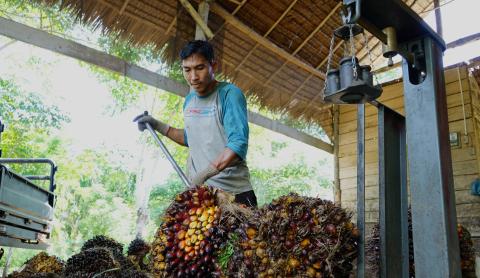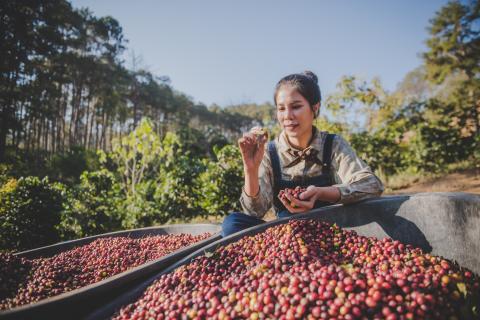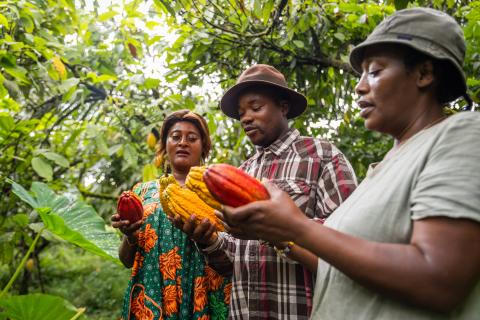Approaching the EU Deforestation Regulation and traceability for the products in scope
The clock is ticking for compliance with the EU Deforestation Regulation: how does it impact traceability for the products in scope?
If you are among those who have read the EU Deforestation Regulation (EUDR), it will not have escaped your notice that no requirement is explicitly and directly imposing supply chain mapping or traceability procedures upon EU operators and non-SME traders.
To better understand the impact of the Regulation in terms of traceability, one must look at some of the information requirements listed in Article 9 of the Regulation: (1) the country of production, (2) the geolocation of all plots of land where the relevant commodities were produced and (3) the date or time range of production1. Companies impacted by the Regulation’s due diligence obligations will need to collect this information for all the products in scope which they are placing on the EU market or exporting from it2. This task is not to be taken lightly as those three elements will need to be systematically included in Due Diligence statements filed by the relevant Organisations, as highlighted in Annex II of the Regulation.
Supply chain mapping and traceability
What does this mean in practice? Operators and non-SME3 traders placing relevant products on the EU market will need to have a complete overview of all entities and trade relations in their supply chains, back to the raw material producers. This is important so that an organisation is able to collect the above-mentioned information with certainty, in particular the geolocation of the plot of land. It is also key to assess the complexity of the supply chain as well as the risk of mixing with products of unknown origins4.
When this information is not already known by the operator or non-SME trader, an initial step is to engage in a thorough supply chain mapping exercise5 back to the farms or forests producing the relevant raw commodities.

A few challenges relating to supply chain mapping are well-known and have already been experienced by the timber sector, which has been implementing the EU Timber Regulation requirements for more than a decade:
- The longer and the more complex the supply chains are, the more difficult and demanding supply chain mapping will be.
- Supply chain mapping is in essence a strong transparency exercise, which requires solid engagement, communication and trust-building with direct and indirect suppliers. This is necessary to properly identify trade links toward the area of raw material production.
- Supply chain mapping requires a certain level of updating and verification, as declaratory information obtained from indirect suppliers through indirect channels of communication bears the risk of being either quickly outdated, and/or incomplete, and/or simply incorrect. To address these issues, possible approaches are to (1) cross-check identified trade links with documentary (or other) evidence, such as sample invoices and transport documents between each supply chain node, (2) proactively identify points in the supply chain particularly at risk of mixing with products from unidentified sources and (3) raise awareness across suppliers of the importance to notify any new supplier entering in the supply chain.
- Some existing supply chain mapping digital tools are built on a system of cascading surveys to suppliers to facilitate the upstream collection of information.
Supply chain information management
Getting suppliers to collect and provide supply chain information is always a challenge. Organising and maintaining supply chain information is yet another daunting task, as it frequently involves a very large amount of data with a high level of complexity. Specific digital systems have to be developed to properly manage this information. There is no ‘one solution fits all’ type of advice, as operators with relatively simple products, small and stable supply chains might be able to rely on the usual office software commonly at their disposal and on most computers (text documents, spreadsheets, images, folder and sub-folder storage and communication via emails). However, for most supply chains, the amount of data to manage will very quickly outgrow this suite of commonly used tools.
Databases are the most appropriate type of software for allowing companies to maintain long records and cross-reference data in complex ways. In other words, being able to record and match data about suppliers, raw material, specific products, deliveries, etc. On top of the data itself sits a user-interface as a software or a platform.
A core question to setting-up or updating databases used to store supply chain information – particularly in view of EUDR compliance - is how the information is collected and who has access to the digital tool:
- Digital tools may be mainly aiming at storing and organising origin information on products collected through different communication platforms, which does not necessarily feed this data automatically into the digital tool. Access to the tool is usually restricted to the organisation deploying it, possibly extending to its direct suppliers. This approach is product-backward traceability, where supply chain information is collected from end-products back to source.
- Alternatively, digital tools may be built with an ambition to be used more largely across supply chains, whereby more supply chain entities will record and pass on origin information as material and products physically travel through the supply chain. This approach is often termed source-forward traceability. It can also be achieved by a combination of successive digital tools that ‘talk’ to each other via interoperability features.
There are many other available options and elements to consider while choosing the right digital traceability tool, including the following:
- Tools can be developed in-house by organisations themselves, or can be developed by an external IT service provider which will either build a fully-customised tool or offer an off-the shelf solution;
- Available software or platforms can focus solely on supply chain mapping or traceability features, or can include various related but additional functionalities, such as: providing product risk ratings; accessing suppliers’ ESG6 ratings; procurement management features; banking or training services for farmers, etc.
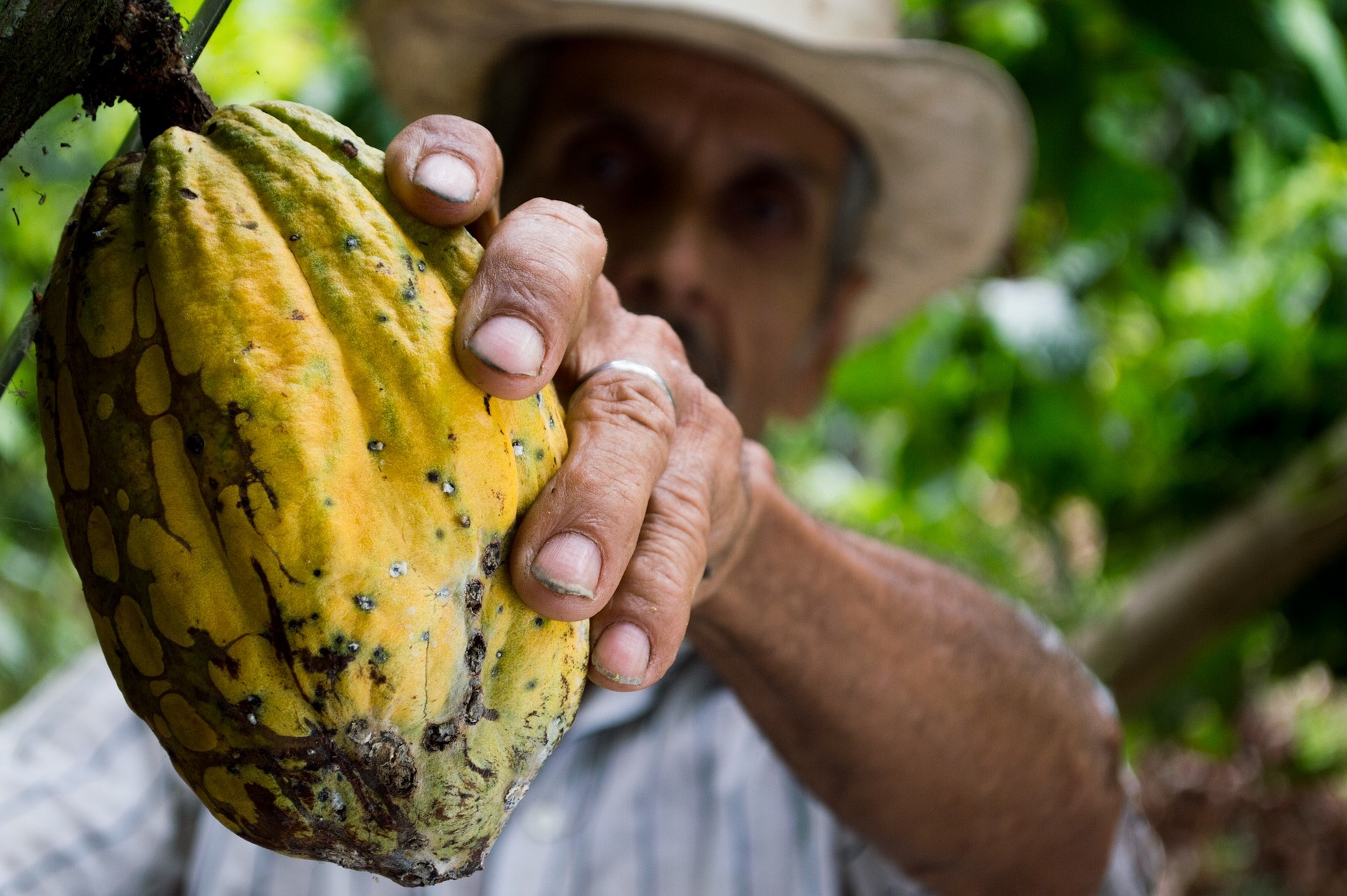
Geolocation information
Once supply chains for products in scope are fully known to operators, specific attention needs to be given to the requirement for the geolocation of all plots of land.
Article 2(27) of the EU Regulation on Deforestation defines a plot of land as “land within a single real-estate property, as recognised by the law of the country of production, which enjoys sufficiently homogeneous conditions to allow an evaluation of the aggregate level of risk of deforestation and forest degradation associated with relevant commodities produced on that land”7.
Article 2(28) defines geolocation as “the geographical location of a plot of land described by means of latitude and longitude coordinates corresponding to at least one latitude and one longitude point and using at least six decimal digits”.
Geolocation coordinates are a combination of two digits, one representing a latitude and the other a longitude, the intersection of both corresponds to a point on the surface of the Earth. The obligations of the EU Deforestation Regulation in relation to the geolocation of plots of land will take various forms:
- For plots of land under 4 hectares, as well as for cattle establishments, a single geolocation point (one latitude and one longitude reference) will be sufficient;
- For plots of land over 4 hectares used for the production of the relevant commodities other than cattle, polygons with sufficient points to describe the perimeter of those plots of land will be needed.
This geolocation information needs to be collected and recorded if it is not already available. Even if the supply base is huge, such as in the case of crops grown by smallholders, it will be necessary to map actual plots of land. This step is usually done by physically going on the field with an appropriate device (either a hand-held GPS or a smartphone). It is also possible to map points or polygons directly from a computer by pinning a property or drawing its boundaries onto an Earth image.
Regardless of the solutions employed, the exercise of collecting geolocation information by mapping farms and forests supplying raw material has important implications in terms of logistics and supply chain engagement, as it will likely be initiated by an organisation closer to consumer markets but logistically orchestrated or implemented by organisations closer to producers.
Beyond the logistics and costs associated with this mapping process, several elements should be considered to appropriately manage geolocation information:
- Latitude and longitude references can be recorded based on different coordinate reference systems (e.g. UTM, WGS, Lambert, etc.);
- Coordinates can be saved in different file formats (e.g. csv files, shapefiles, KML files GeoJSON files, etc.);
- Coordinates can be managed and visualized through different software or platforms (e.g. Google Earth, ArcGIS, QGIS, etc.).
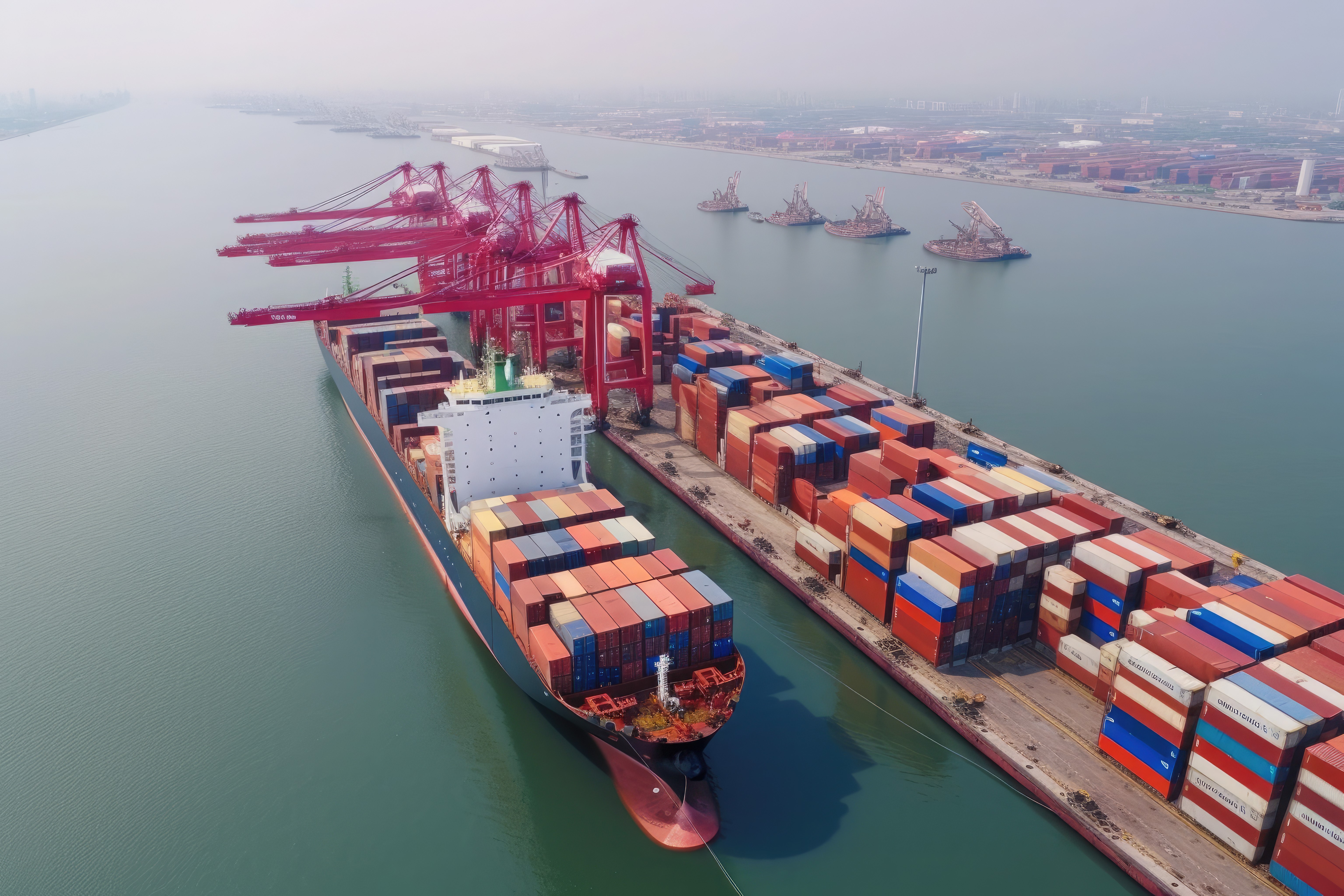
Moreover, as commodities, materials or products derived from those commodities are mixed within supply chains, the geolocations will need to be aggregated accordingly so that the products placed on the EU market or exported from it can be matched against all possible origins of the raw material. Precision in that exercise will be of the utmost importance. Indeed, any meaningful conclusion that the relevant product has not caused deforestation after the cut-off date - including those products traded in bulk or composite, - relies on the exactitude and completeness of the geolocation list. As the recent EU Commission FAQ document8 states, “when a shipment of bulk commodities that have all been mixed is linked to several hundred plots of land, the fact that one of the plots of land has been deforested after 2020 could make the whole shipment non-compliant”. It further specifies that one polygon should correspond to one plot of land and cannot correspond to (1) a large area encompassing several plots of land or (2) an area that includes land other than plots where the commodity is grown9.
To achieve a reliable identification of the plots of land where commodities included in a product have grown, it seems imperative that all entities of concerned supply chains step up their geolocation information and data management skills, so that the aggregation of different lists of points and polygons at different steps of the supply chain is done with precision. It is also crucial that digital tools used to collect and pass on origin information on traded products are (1) including features necessary to handle geolocation information, (2) facilitating or automating the process of merging geolocation information to match the processing activities and (3) facilitating the communication to the next supply chain entities.10
Date or time range of production
Another very important element on the level of traceability induced by EUDR requirements is the necessity to communicate the date or time range of production. Depending on the maximum time range of production that will be allowed to be declared, this may have deep implications in terms of digital systems that need to be deployed to capture this information.
Unlike geographical information, which can be stable in time (provided that the supply chains are stable and that a process is in place to identify new entities entering them), time-based information on the production of the raw commodity (e.g. the harvest for wood or agricultural commodity and the slaughter for cattle) is bound to be dynamic information changing with successive shipments placed on, or exported from, the EU market.
In its recently published FAQ, the EU Commission seems to hold a strict interpretation of this requirement as it refers to the specific date of harvesting for all commodities other than cattle, therefore not allowing to declare a broad time range that could span months.11
The case of product sustainability certifications
How can existing certification schemes help fulfil traceability requirements of the EUDR? Interestingly, in their current form, these schemes have a high potential to support risk assessment and mitigation for legal and deforestation-free production, but they are less likely to be helpful when it comes to fulfilling traceability requirements.
Historically, certification schemes have not been built with a strong transparency component on the origin of the raw material traded, as long as the assurance system ensuring that the commodity came from a certified land-use operation was strong and efficient. The traceability records do exist and are audited at each step of the supply chain, but they are usually not centralised in a single digital system, and it is not mandatory to transfer this information to buyers downstream.12
Moreover, to ensure progressive uptake and to address the reality of commodities traded in bulk, these schemes have also adopted different chain of custody (CoC) options, including some (e.g. different types of mass balance models) which deviate from relying on the physical traceability of the material. Claimed products under mass balance models are therefore not necessarily products which are physically composed of raw material grown and harvested on certified land-use operations.
Segregated models - those which require products to be stored or manufactured separately - are best placed to support the required level of traceability, provided that they:
- Allow the aggregation and sharing of origin information – this might already be the case for Identity Preserved models13;
- Do not allow a certain % of material not being certified or controlled14 and traced to enter the supply chain;15 and
- Allow the collection and sharing of time-based information on the production of the commodity in scope.
Certification schemes do represent a huge opportunity to align with EUDR overall requirements, but they will need to evolve to better fit the traceability requirements, including providing digital tools facilitating the collection and communication of geolocation and time-based information. In addition, they also need to ensure that their supply chain integrity mechanisms are sufficiently robust to mitigate the risk of undue claims within supply chains.
Geolocation data input to the EU information system
Last but not least, submitting Due Diligence statements will be done by operators upon placing products on the EU market or exporting them from the EU market. Important new information has recently been shared by the EU Commission:16
- The Information System will be based on the existing TRACES NT system and will go live in the last quarter of 2024;
- Geolocation data can be submitted by drawing on the Information System’s inbuilt map feature, uploaded in an attached file, or typed in as coordinates;
- The file format GeoJSON is supported to upload geolocation data; other common file formats are being considered;
- A function to copy and paste information from previous Due Diligence statements will be added to the Information System;
- The development of an Application Programming Interface (API) to connect the Information System to other external systems is not currently envisioned.
Takeaways and where to start
If you are an operator or non-SME trader impacted by the EUDR obligations, get your traceability processes in order:
- Map your supply chains back to the producers of your raw commodities.
- To ensure the collection of reliable supply chain information, invest in awareness-raising, trust-building and ultimately collaborative efforts with direct and indirect suppliers.
- Ensure that there are reliable and efficient processes in place across supply chains to record and aggregate geolocation and time-based information.
- Ensure that appropriate digital tools are deployed to collect, store and manage your supply chains information, including geolocation and time-based data associated with the raw commodity production. This might mean updating existing tools or developing new ones.
- Understand the available certification schemes, and particularly their available chain of custody models, to understand if those might support your traceability requirements.
- Stay informed on the development of the EU Information System and how geolocation data will be logged with Due Diligence Statements.
Sources
- Article 9(c) and 9(d) of the Regulation (EU) 2023/1115 on the making available on the Union market and the export from the Union of certain commodities and products associated with deforestation and forest degradation.
- Products in scope are defined by a list of covered HS code included in Annex I of the Regulation and pertaining to seven key forest-impact commodities: timber, cocoa, soy, coffee, rubber, palm oil and cattle.
- Small and Medium Enterprises, as defined in Article 3 of Directive 2013/34/EU.
- Article 10(i) and 10(j) of the Regulation (EU) 2023/1115.
- Supply Chain Mapping
- Environmental, Social and Governance.
- Note that the EU Commission FAQ on the Regulation, published 28th June 2023, establishes that “the absence of a land registry or formal title should not prevent the designation of land that is de facto used as a plot of land” (question 7), and that “farmers can collect the geolocation of their plots […] regardless of the absence of a land registry or the lack of IDs or titles over their land. No personal information is required from the farmers (unless they are direct suppliers of the operators or operators themselves). The geolocation of the land they cultivate is sufficient” (question 8).
- EU Commission FAQ, question 12.
- Idem.
- To facilitate this process, Preferred by Nature is currently developing a Protocol to transfer geolocation data, under the Forest Data Partnership through the Food and Agriculture Organization of the United Nations (FAO).
- EU Commission FAQ, question 12.
- For wood product, FSC has made this a requirement, but only upon request from certified buyers downstream. Requirement 6.1.b of the FSC Chain of custody certification Standard FSC-STD-40-004 V3-0: “The organization shall ensure that its FSC-certified products conform to all applicable timber legality legislation. At a minimum, the organization shall […] upon request, collect and provide information on species (common and scientific name) and country of harvest (or more specific location details if required by legislation) to direct customers and/or any FSC-certified organizations further down the supply chain that need this information to comply with timber legality legislation. The form and frequency of providing this information may be agreed upon between the organization and the requester”.
- An Identity Preserved (IP) model “ensures that certified product from a certified site is kept separate from other sources. If used through the whole supply chain, it allows certified products to be uniquely traced through the production process from a production site and batch (sustainability certificate holder) to the last point of transformation or labelling of a product (or use of a claim). In this model, the certified material cannot be physically mixed with other certified or non-certified material of the same commodity or ingredient. Material from different certified sources cannot be physically mixed and must be documented accordingly”. ISEAL Chain of custody models and definitions, Version 1.0, September 2016.
- In some mass balance system, separate controls are assigned to the non-certified product that is blended or has volumes reconciled, with certified products. This is the case for FSC, where blended wood has to be assessed, via due diligence, as not coming from five types of unacceptable sources (FSC-STD-40-005).
- Several certification schemes allow a small percentage of non-certified material into their segregated mix, for instance: 10% maximum for Rainforest Alliance (cocoa, coffee), 5% maximum for RSPO (palm oil).
Summary record of the 16th Meeting of the ‘Multi-Stakeholder Platform on Protecting and Restoring the World’s Forests’, 8 June 2023, First session. Note that those are not binding declarations and might evolve prior to the entry into application of the EUDR requirements.
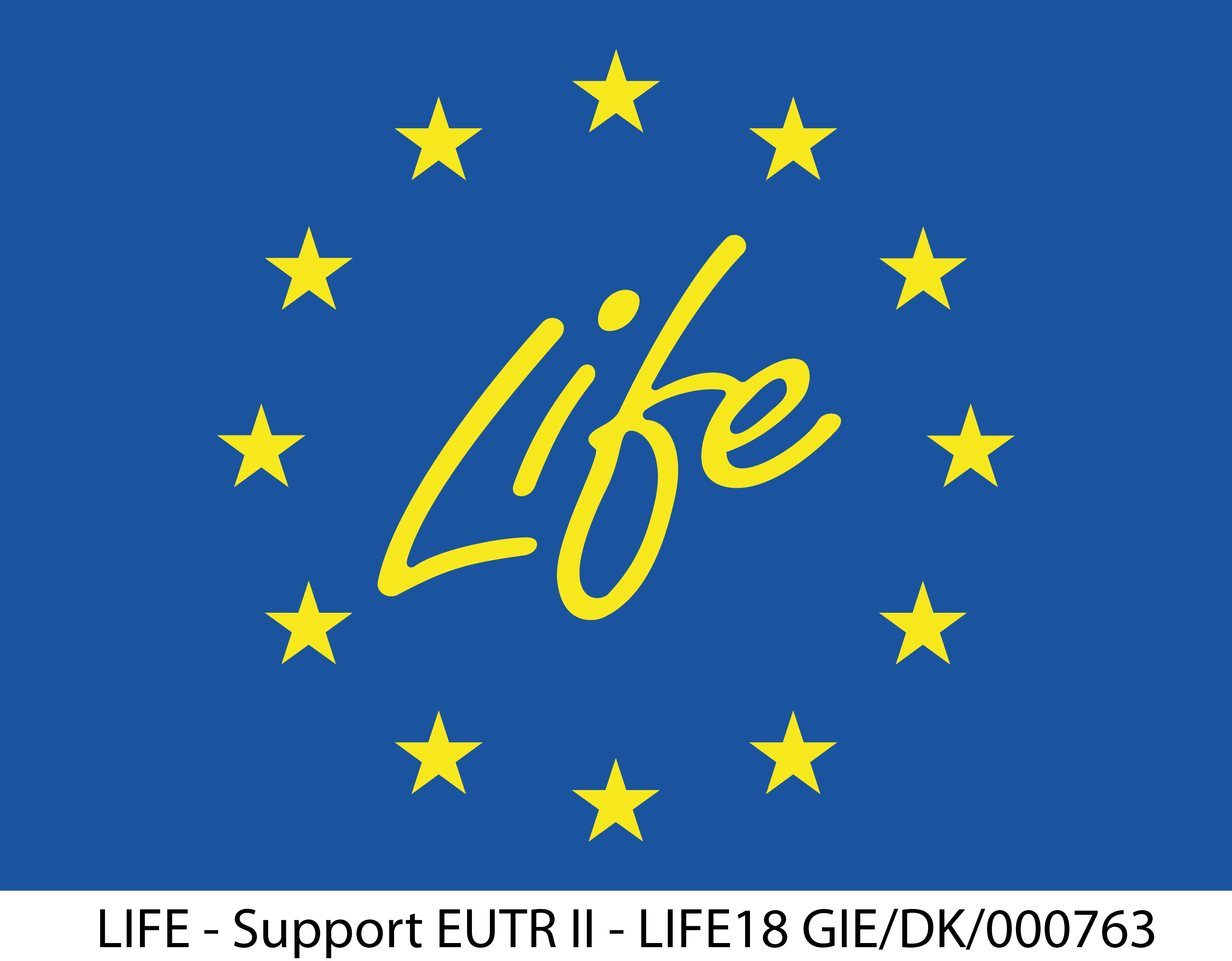 The European Commission (donor) is not responsible for any claims or views presented in this material. The European Commission's support for the production of this publication does not constitute endorsement of the contents which reflect the views only of the authors, and the Commission cannot be held responsible for any use which may be made of information contained therein.
The European Commission (donor) is not responsible for any claims or views presented in this material. The European Commission's support for the production of this publication does not constitute endorsement of the contents which reflect the views only of the authors, and the Commission cannot be held responsible for any use which may be made of information contained therein.

